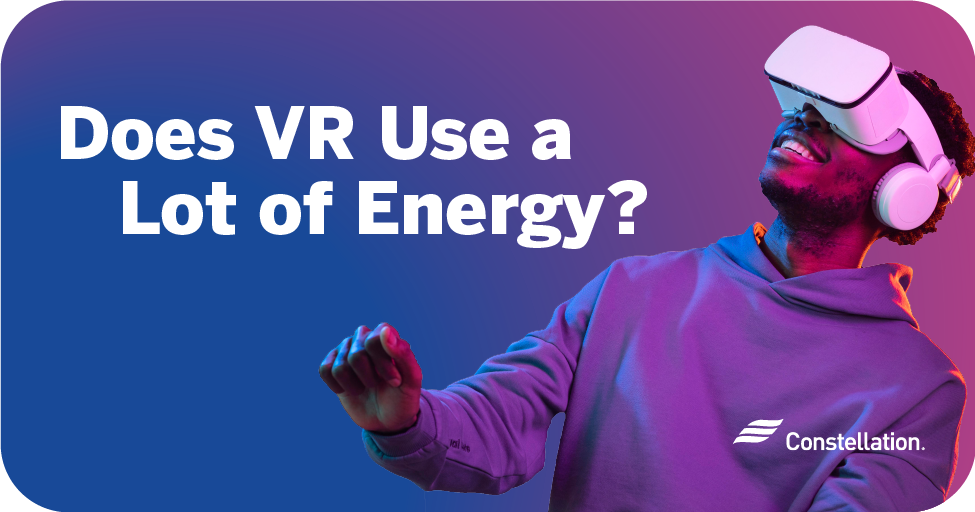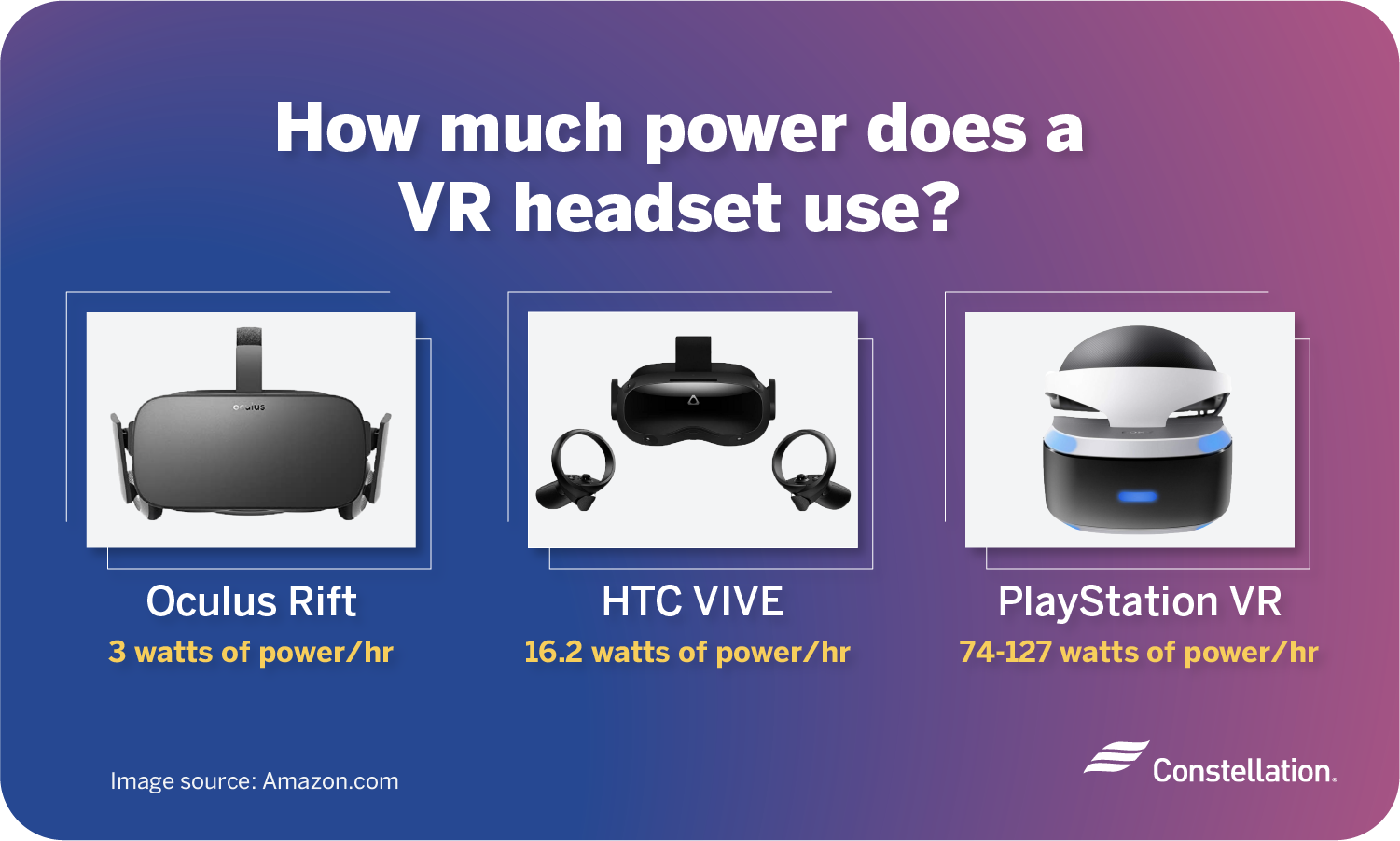
- Category:
Home Energy Savings -
Last updated:
February 22, 2022
Does VR Use a Lot of Energy?
VR or virtual reality technology is growing in popularity. If you are thinking about buying, you might wonder about VR power consumption. The technology places you in an immersive, 3-dimensional world, meant to feel as real as possible. Gaming systems are expensive to buy and to run. Before investing in VR equipment for your home, you might want to ask: Does VR use a lot of energy?
What are VR headsets?
The main component of all VR systems is the headset. These devices look like extra-large goggles. They cover your eyes and provide you with a visually immersive 3-D experience.
How do virtual reality headsets work? High-end models include sensors like accelerometers, gyroscopes, magnetometers and proximity detectors to track your motions and feed the information to your computer or game console. That data affects what you “see” in your headset. If you move right, the picture you see moves right. Cheaper versions use sensors in your smartphone to track and share movement data.
Different types of virtual reality headsets
VR headset technology is rapidly evolving. Currently, three types of VR headsets are available. VR power consumption varies by type.
- Tethered VR headsets. These are the most common types of VR headsets. They are physically connected to a computer in order to work. Because they tap into the data processing power of a computer, they offer superior performance. A drawback is that you have to be careful not to get caught up in the wires.
- Standalone VR headsets. These headsets, also known as all-in-one headsets, include computing power in the device that you wear on your head. You sacrifice performance–visual experience and battery life– for freedom of movement.
- Smartphone VR headsets. This affordable, stripped-down option is essentially a plastic case for holding your cell phone on your head. It relies on the sensors in your phone and the phone’s screen to deliver something like a VR experience.
Popular VR headsets and their power consumption
Gaming systems can be power-hungry devices. It makes sense to ask: How much power does a VR headset use? VR power consumption will depend partly on the VR headset and partly on the system you are using for your game. It will also depend on whether you’re unplugging these devices when not in use, as this can result in wasted electricity.
Here are some considerations and power consumption statistics by brand.

Oculus Rift
Though recently discontinued, this device has been a popular option for gamers. It is being replaced by the Oculus Quest. It connects to your computer via USB and a video HDMI cable. It connects to the wall using a 5 volt DC, 1.5 watt dongle. At peak use, the Oculus Rift power draw is 3 watts of power per hour.
HTC VIVE
This device uses a VR headset and multiple external base station units positioned around your space for “room scale” mobility. It connects to your computer via a “link box,” that combines USB 3.0, HDMI, and power connections. Its VR power consumption, including the headset and external base stations, is 16.2 watts per hour.
PlayStation VR
This headset connects to the PlayStation 4 (both Slim and Pro models) and is compatible with the PlayStation 5 console through a USB adapter to the Playstation camera. Energy usage will vary by game. Playing Batman Arkham in power gaming mode will consume between 74 watts (on the Slim model) and 127 watts (on the Pro model).
Things to consider before purchasing a VR headset
Buying a VR headset can be a fun process, but it is also complicated. You will want to know whether VR uses a lot of energy for the particular device you are using. And beyond how much power a VR headset uses, there are other factors to take into consideration:
- Upfront costs. Not everyone has an unlimited budget. You will need to weigh the quality of the immersive experience you want with the cost of your options. A smartphone VR headset is relatively inexpensive, however it won’t perform like a top-of-the-line tethered set.
- Product requirements. You will need quite a beefed up gaming computer to get the most value from a tethered VR headset. It costs more upfront and uses more electricity during game play.
- Amount of space in your home. You will need space to move around when using VR, particularly for devices with base stations around the room.
- Experience. If you want the most realistic experience, you’ll have to pay more for it.
- Comfort. Headsets with all the whistles and bells can put pressure on your nose, cheeks, and even ears. Test them to see if they are still comfortable an hour into game playing.
- Content availability. Are the games you want to play and experiences you want to have available on the technology you are considering?
VR is gaining popularity with consumers. As it grows more mainstream, it is worth considering how much energy these devices use, along with the other factors that go into making your choice.




